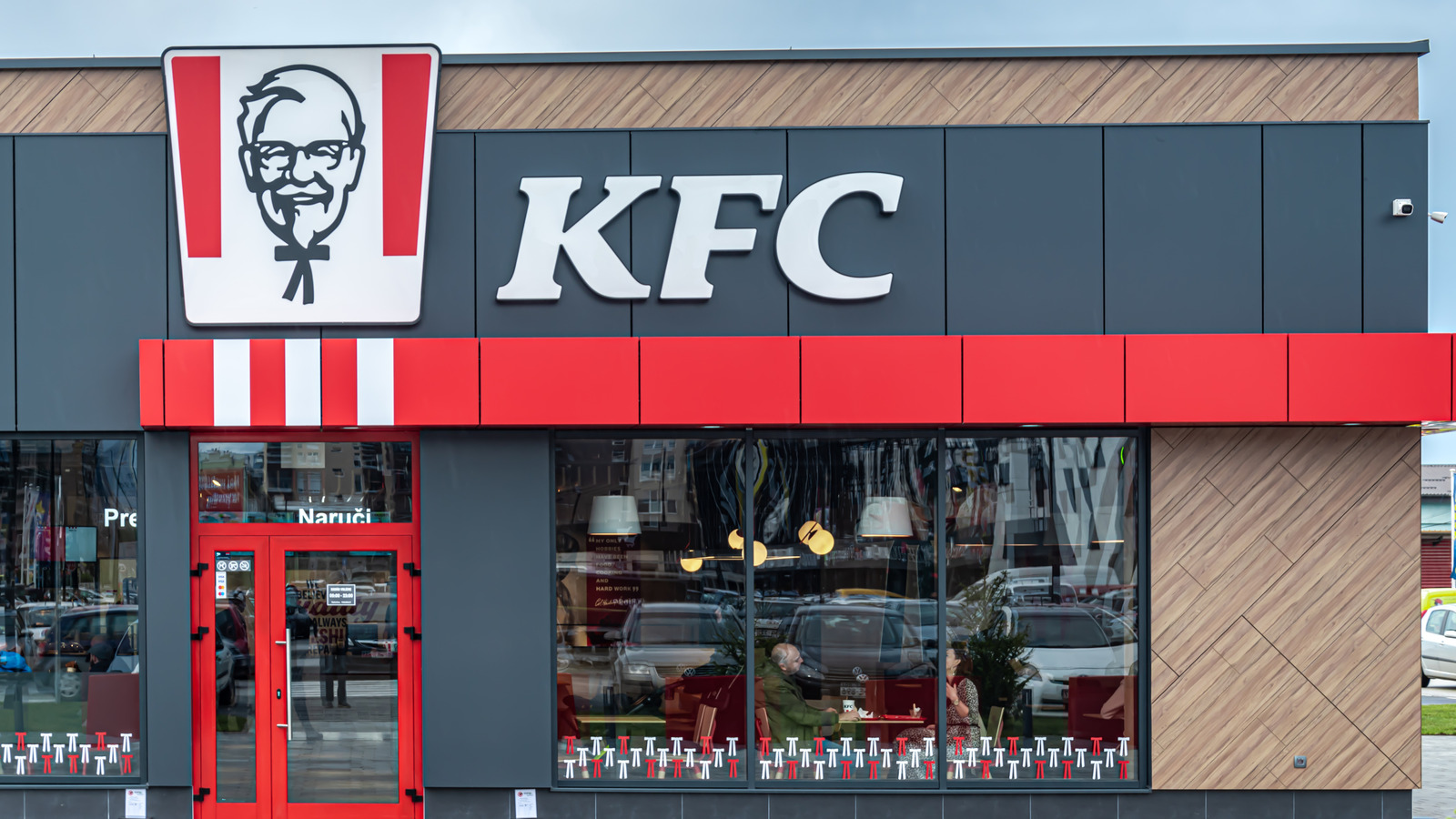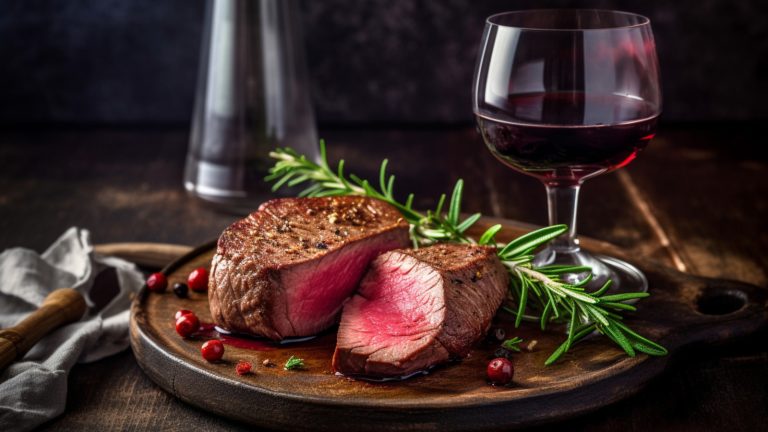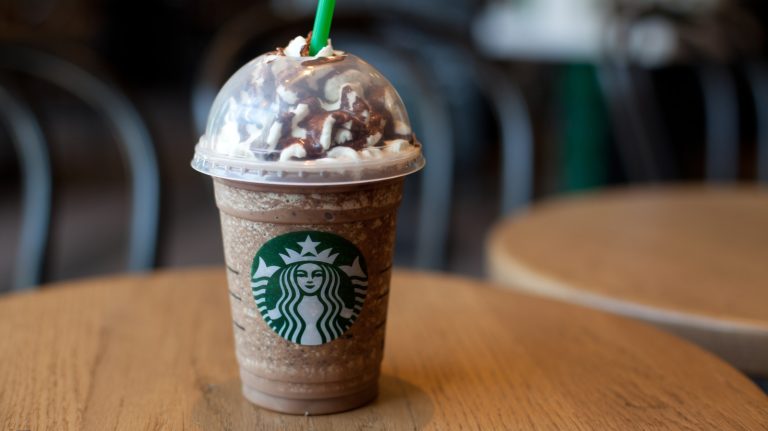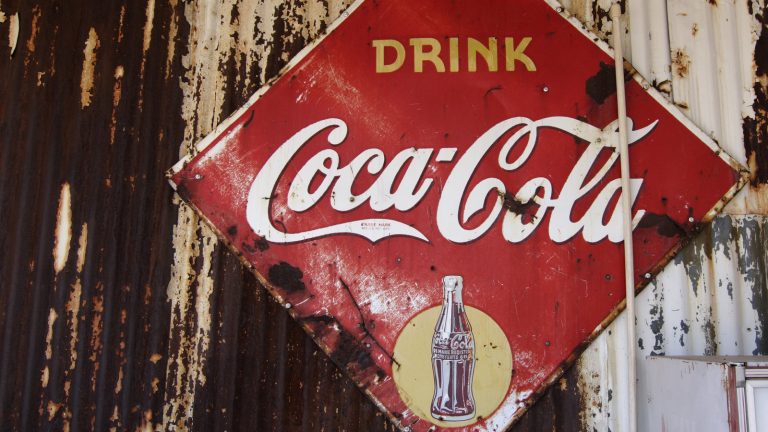Founded by Colonel Harlan Sanders, KFC is an American food icon. The first KFC franchise opened in 1952. For more than 70 years, KFC has spread fried chicken worldwide. But changing times have not been kind to the once No. 1 chicken spot.
KFC’s sales and customer traffic have been down most quarters since 2023. There have been leadership shake-ups, store closures, and constant customer criticism that the menu is overpriced. In that same time, the competition to be top bird has intensified. Once the most popular fast food chicken brand in the world, KFC now falls at No. 3 (behind Chick-fil-A and Popeye’s) on most industry rankings.
There are many factors contributing to KFC’s current struggles. Overall, they point to an established brand that has been achingly slow to adapt to a changing customer preferences and market forces. It’s a massive enterprise, with more than 30,000 locations in 96 countries. It has to cater to varying tastes, and changing course can be like trying to turn the Titanic. What went so wrong? Read on for details.
Sales are down
According to KFC quarterly reports, the brand experienced multiple quarters of declining sales, ending 2024 overall with 5% lower sales than in 2023, per Reuters. The first few months of 2025 were no better. Recent reports indicate that KFC is down by about 4% more, notes Restaurant Dive. That’s might not seem like a lot, but the chicken giant has been sliding since 2022, when KFC saw about an 8% decline in average sales per unit, after a previous eight years of steady growth. In 2023, competitor Popeye’s unseated it as the No. 2 chicken brand by market share. Add the low sales through every quarter of 2024, and it’s clear to see that KFC’s downward turn is now a long-term trend.
KFC’s losses are more dramatic when you consider the greater fast food market. In 2024, fast food (or “quick service”) sales were up all across the U.S. KFC was one of the few brands that posted lower sales, while the rest of the industry saw higher traffic and profits. The difference can’t be boiled down to a public disdain for poultry. Other chicken brands like Wingstop and Raising Canes grew in 2024. With industry insiders already reducing overall restaurant sales projections for 2025, it doesn’t seem like a great climate to reverse KFC’s fortunes.
Traffic is down
A big reason KFC’s sales are down? The customers simply aren’t coming. In 2024 and 2025, KFC saw monthly traffic declines from 2% to 12% every quarter.
Customers have nearly limitless options for fast food chicken. Brands like Wingstop and Chik-fil-A offer a more focused menu and a more distinct experience for customers looking for grab-and-go sandwiches or endlessly customizable wings. KFC’s menu, by comparison, can be confusing and difficult to customize. In an era where consumer appetites for personalized experiences are nearly limitless, can a whole family or friend group agree to share a single bucket of the same chicken?
The chicken competition has also expanded beyond traditional fast food chains. Grocery stores now offer quality prepared chicken options. Food delivery apps have also made local restaurant foods more accessible than ever. Former KFC loyalists may simply have found a way to get their chicken fix elsewhere.
Quality is down
We hate to say it, but it might be true that KFC’s quality has declined along with its sales and traffic. In our recent ranking of fast-food fried chicken, KFC came out on the very bottom. When it comes to overall customer experience, about 80% of all KFC’s customer complaints relate to food quality and service.
Research by marketing network Marketing Scoop suggests that KFC also receives a higher number of customer complaints than competitors. According to data compiled from various consumer reporting agencies, KFC receives an average of 5,000 monthly customer complaints. In that same data set, Marketing Scoop counted 500 monthly complaints for competitor Chick-fil-A. Yes, KFC has more locations than Chick-fil-A. But at around 4,000 US locations to Chick-fil-A’s 3,000, KFC’s relative size can’t account for 10 times the number of negative reviews.
The difference between the competitors is dramatic on the Better Business Bureau website. With 621 reviews at the time of publication, KFC earns an overall score of 1.4 out of five stars. Customers on the platform complain most about high prices and “frequent order inaccuracies.” On the other hand, Chick-fil-A clocks in a 2.1 out of 5 stars with 578 reviews. That’s a 50% higher score, with only about 7% fewer reviews.
Stores are closing
KFC is a franchise-based model, meaning the brick-and-mortar stores are not all owned by the parent company. They are owned by independent franchise owners who partner with the brand. This can be a fast way to grow a chain business, but it can also be precarious, with disputes between owners or varying levels of service quality leading to poor customer service and closures.
When those closures happen, they can be big and they can happen fast. In 2024, a single KFC franchise owner closed 25 KFC locations throughout the Midwest. After a dispute with the franchise owner, the brand announced a further closure of 283 KFC locations in Turkey.
These widespread closures signal potential underlying issues for KFC beyond the ever-present risks of the franchise business model. Each shuttered KFC location represents a step back for the brand in competitive markets. As competitor chicken chains continue expanding, these KFC closures create opportunities for rivals to capture KFC’s customers. The pattern of closures across multiple regions starts to look like a systemic challenge rather than a handful of isolated incidents. For a legacy brand fighting to maintain relevance with younger consumers, these closures could accelerate negative perceptions about the brand’s long-term relevance.
Competition is heating up
Anyone who remembers the Great Chicken Sandwich War of 2019 (launched when Popeye’s blew everyone’s minds with its spicy chicken sandwich) knows that fast food chicken is competitive. In recent years, new chicken-based brands have emerged, and quickly found places at customers’ kitchen tables.
These newer brands offer a fresh take on the classic chicken, with modern flavors and modern sensibilities. California-based juggernaut Starbird touts its thoughtful ingredient sourcing and global flavor combinations like mango-habanero and Thai herb aioli sauces.
Dave’s Hot Chicken was just purchased for $1 billion by private equity firm Roark Capital in March of 2025. Roark already owns massive brands Dunkin’ and Subway. This new deal sets the already popular chain up for massive franchise expansion in the year ahead. KFC seems to be choosing the “if you can’t beat them, join them” strategy. It’s launching a separate chicken-based brand focused on chicken tenders in 2025. The youth-focused brand is called Saucy. Plans call for a menu of original recipe chicken tenders with eleven options for dipping sauces.
It’s moving its headquarters
Though it shortened the name from Kentucky Fried Chicken to KFC in 1991, the chicken brand kept its headquarters in the Bluegrass State. In 2025, the chicken brand will move its headquarters to Plano, Texas. Publicly, KFC heads have stated it is a move that will reduce costs and create efficiency at the corporate level.
Parent company Yum! Brands is already headquartered in the Lonestar State. The move puts KFC leadership side by side with colleagues at Pizza Hut and Taco Bell, which are both currently more popular with U.S. consumers. From a business perspective, this makes sense. But it’s also giving “moving home to live with your parents because you maxed out your bank account” vibes. Tellingly, KFC’s more successful Yum! Brand siblings Taco Bell and Habit Burger get to remain in their Irivine, California pad.
The relocation will likely save KFC on taxes. Texas has no corporate tax, while Kentucky’s current corporate tax rate is 6%. It’ll also make it easier for Yum! to redistribute the KFC team throughout the organization if the chicken giant goes belly up.
Consumers are complex
The CEO of KFC’s parent company Yum Brands recently attributed the chain’s sales and traffic declines to a “complex consumer environment,” per NRN. He’s not wrong. Consumer tastes have changed dramatically in the nearly 100 years KFC has been in business.
Consumers nowadays want foods that are both tasty and affordable, with plant-based options in sustainable packaging. And they want to feel good about sharing it on TikTok. The growing interest in plant-based foods is one clear example of where KFC may be failing to meet customers’ complex needs.
Between 2019 and 2022 alone, the sales of plant-based food grew by 13% in the U.S., notes a study from the Plant Based Food Association. Currently, KFC does not offer plant-based protein alternative on the U.S. menu. It tested a vegan chicken option with a lot of fanfare in 2022, but it was only for a limited time. Removing it from the menu may have left many vegetarian and vegan diners unwilling to make a meal of sides at the chicken giant.
Promotions underwhelmed customers
Speaking of limited time offers, KFC spent much of 2024 rolling out several limited time promotions like its “Taste of KFC” value menu. Traditionally, KFC’s limited-time offers (LTOs) were winners for the brand — the 2010 Double-down sandwich was a social media phenom.
But somehow, the LTOs in 2024 hit different. Even a promotional holiday-themed chicken bucket complete with a streetwear collection didn’t move the needle. These marketing strategies could have been ill-timed. A splashy collaboration with a streetwear artist featuring pricey merch may not have been a slam-dunk amidst a backdrop of inflation fears, especially for brand consumers already perceive as pricey — unless you need a $32 pair of shorts with “finger-lickin’ good” embroidered on the leg. Which, yes, you can buy directly from the KFC website.
Even value-focused promotions like the Dunk It Bucket value meal failed to launch. The $7 meal combined chicken tenders, french fries, and Mashed Potato Poppers with three dipping sauces. Online customers criticized the menu item, likening the dish’s size to a “kids meal.”
In today’s chicken-eat-chicken fast food world, brands need to find ways to be flexible while maintaining their core identity. KFC’s inability to generate genuine excitement (and translate that excitement into dollars) through these recent promotions could indicate deeper brand positioning issues. Without successful campaigns that resonate with consumers, KFC risks losing more customers to competitors who better understand their audience’s current needs.
The chicken supply chain is unstable
The entire chicken supply chain has struggled with rising prices and lower supplies due to bird flu and logistical challenges, driving up prices. This makes it hard for a chicken central brand to compete on value. When pretty much your entire menu revolves around chicken, you can’t just pivot to selling more burgers or salads when poultry gets pricey (especially when there’s the iconic 11-spice concoction that makes KFC’s chicken stand out). KFC is in a tougher spot than non-chicken-based brands right now. Keeping prices steady could mean losing money; raising prices could mean losing customers.
Industry forecasts suggest these supply chain pressures will continue through 2025. The USDA predicts that U.S. poultry prices with increase by at least 1% in 2025, and they are expected to rise steadily over the next 10 years. As the largest chicken based food brand in the world, KFC feels the force of these market shifts more dramatically than smaller competitors.
Modernizing a legacy brand is challenging
With all that said, KFC is a massive brand that has been frying up broilers for nearly a century. KFC has amassed more than 30,000 locations across the globe. KFC’s original recipe chicken served in its red and white striped bucket has become a fast food icon. Making any change in a business that size and that established is like trying to rebuild a plane while it’s flying.
The company faces a classic legacy brand dilemma — how to evolve to appeal to new customers without alienating a loyal fan base. KFC took an innovative step in 2024, testing multiple spin-off concepts. In addition to the tenders-based Saucy, KFC also tested a more tech-heavy KFC prototype restaurant called KFC Original in 16 locations throughout Orlando, Florida. With more ordering kiosks and a nostalgia-inflected interior, KFC Original also features a more streamlined menu than a standard KFC. The response in Florida was so promising that the Colonel is converting several Texas KFCs into KFC Original locations in 2025.
Other fast food brands have tried spinning off sibling brands with mixed success. Anyone remember Chipotle’s spinoff Pizza Locale? KFC is betting that the test concepts will mimic the success of McDonald’s CosMc’s spinoff. Launched as a single Chicago location in 2023, the beverage-based CosMc’s added six more locations in 2024. Only time will tell if KFC’s test concepts repeat that success.
KFC was slower to adopt tech solutions
The methodical approach to rolling out changes may have made KFC slower to jump on the tech train than its competitors. Fast food brands like McDonald’s and Wendy’s have relied on self-service kiosk tech since around 2017. Chicken competitor Popeye’s rolled out a tech glow up in 2022. As mentioned above, KFC made tech integration a major part of the new KFC Original brand extension. It could be too little, too late; the tech-savvy customer base may have already moved to other brands.
Behind the scenes, KFC was slow to add other cost-saving tools like AI-enabled inventory management tools and targeted digital marketing. These tools are less visible to consumers but improve guest experience in innumerable ways. AI-enabled inventory tracking helps businesses identify the best prices from vendors and source alternatives. This translates to more consistent prices for customers.
Targeted marketing tools automatically filter customers into groups based on past purchases. So customers experience promotional messages that are relevant to their interests. Inventory and AI-driven marketing tools could create enough efficiency to reduce costs. Adding more background tech earlier might have helped stay ahead of competitors. But with the sheer number of locations and massive franchise operators that are part of the KFC eco-system, it may simply be too big an institution to adopt change quickly.
KFC lagged on loyalty
Returning customers are the bread and butter of any food business. So loyalty programs are a no-brainer for most brands. Poultry powerhouse Chick-fil-A has offered loyalty since 2013. The Chick-fil-A loyalty program made the genius move of starting off as a VIP, invitation-only system, adding the appeal of FOMO to the mix. KFC didn’t offer a global loyalty app until 2024 – two years after competitor Popeyes started its loyalty program.
Some KFC markets around the globe had various schemes to reward returning customers. In the some non-U.S. markets, customers could collect stamps to redeem free menu items. There was a massive customer outcry when KFC discontinued this program in 2022. KFC’s loyalty program, KFC Rewards, gives customers 10 points for every dollar spent in store or via the KFC app. Customers can use points to redeem special offers available in the app’s “Secret Recipe Vault.” They’ll also receive personalized offers based on order history. If users are in the mood for gamification, they can also opt for rotating in-app deals on specific menu items.
Comments in the KFC subreddit suggest the new loyalty app doesn’t feel, well, rewarding. Customers were initially enthusiastic. But a year into the rollout, the general consensus seems to be that the promotions offered don’t do enough to lower the overall menu cost for value-conscious diners.
New leadership is at the helm
Since 2023, KFC has replaced virtually all its brand leadership, from chief financial officer to chief marketing officer. In 2024 and 2025, KFC replaced both its CEO and company president, bringing in leaders from Taco Bell and promoting a former KFC global marketing chief to KFC U.S. president. It also created a new role; chief digital officer, and staffed it with a Marriot alum with loyalty experience. These big moves indicate an understanding that the brand needs to make big changes to stay relevant.
The leadership transformation represents more than just C-suite musical chairs. KFC has deliberately sought executives with digital transformation experience and track records for excellent customer service. New CEO Scott Mezvinsky, who was appointed in March 2025, previously helmed sibling Yum brand Taco Bell, which consistently delivers in customer perceptions of value.
Catherine Tan-Gillespie, the newly appointed KFC U.S. president, previously led the KFC Canada division. Under her leadership, KFC Canada became known for digital transformation and value-driven offerings. These appointments, along with the creation of the chief digital officer role, signal a focus on technology-driven improvements to the KFC customer experience. KFC clearly sees the challenge ahead of them, and hopes this new team understands their assignment.
It’s jumping on the bowl bandwagon
In 2025, KFC is banking on attracting customers with new bowl-based menu offerings, hoping to finally shift customer perception that the brand is too pricey. The new bowls are $5 and feature nuggets served in a heap of KFC sides. Customers can get their chicken in either Original recipe or Nashville Hot, served on a bed of fries, mashed potatoes, or mac and cheese.
Other fast food brands have seen a lot of success with bowls. Fast food juggernaut Sweetgreen’s reputation is built almost entirely on bowls. Any shift in Chipotle’s burrito bowls leads to customer backlash. Taco Bell’s veggie bowl is a major reason the chain is popular with vegetarian customers.
Bowls are a safe bet for lots of reasons. By combining multiple ingredients in a single container, KFC can deliver value to customers without additional cost to the operation. Like so many KFC menu items, though, these bowls are designed as limited-time offers. So there’s a chance they could disappear after customers find their favorite. Will discovering a beloved bowl be enough to attract new KFC customers and convince them to become regulars? Only time will tell.





